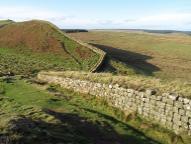Reading the Wall
The Cultural Afterlives of Hadrian's Wall
15-17 June 2016
Hadrian's Wall is an iconic monument, and the impressive remains of the Wall were inscribed in 1987 by UNESCO as a World Heritage Site.
The Wall is typically perceived of as a complex of Roman frontier remains, studied by archaeologists and historians, and protected by heritage managers for the benefit of scholars, visitors, and future generations.
Over the centuries, however, Hadrian's Wall has accumulated a number of intangible associations in addition to its original function as a militarised border monument.
From the Venerable Bede to Rosemary Sutcliff, and from Gildas to George R.R. Martin, the Wall has become a site of international cultural significance. How has the Wall shaped our cultural imaginary? And how has our cultural imaginary shaped the Wall?
Join us as we explore the cultural impact of Hadrian's Wall from its Roman origins up to the present day in a conference at Newcastle University, 15-17 June 2016.
